Business
Homebuyers are leaving big cities for affordability—here's where they're going and how much they're saving
Published
11 months agoon

It’s an age-old trend supercharged by the economic conditions of the COVID-19 pandemic: Homebuyers look to the suburbs for a home with enough space that also meets their budget.
American Home Shield looked at data from Freddie Mac to see which major metropolitan areas are experiencing an outflow of homebuyers, as well as where they are going and how much they could save on monthly mortgage payments. Metropolitan areas include the main city as well as its surrounding towns and suburbs.
Monthly mortgage payments were calculated using the median home price for that metro based on Freddie Mac loan applications over the past year. It assumes a 15% down payment and a 6% interest rate on a 30-year fixed-rate mortgage. It does not include the costs of property tax and insurance.
The analysis reveals that those able to purchase a home in the past year are fanning out from urban centers. Many affordable places people are moving to are in the same state but farther away from the city center. In many cases, homebuyers are moving to suburban areas and, in some cases, the exurbs beyond them.
And by doing so, they’re potentially saving a considerable amount of money.
Based on the weighted average of median home prices, the typical mortgage payment is about $3,000 in the top 20 urban metro areas. People who move from these places to more affordable alternatives save about $600 on average.
Big cities lost their appeal over the last five or so years, and the invisible threat that was the pandemic gave homebuyers only more reasons to seek out less dense spaces. Now that home prices are roughly 43.3% higher on average than in 2019, the price differential in these areas continues to appeal to buyers looking to stretch out their dollars.
Continue reading to see where homebuyers in the top 20 metros are heading.
![]()
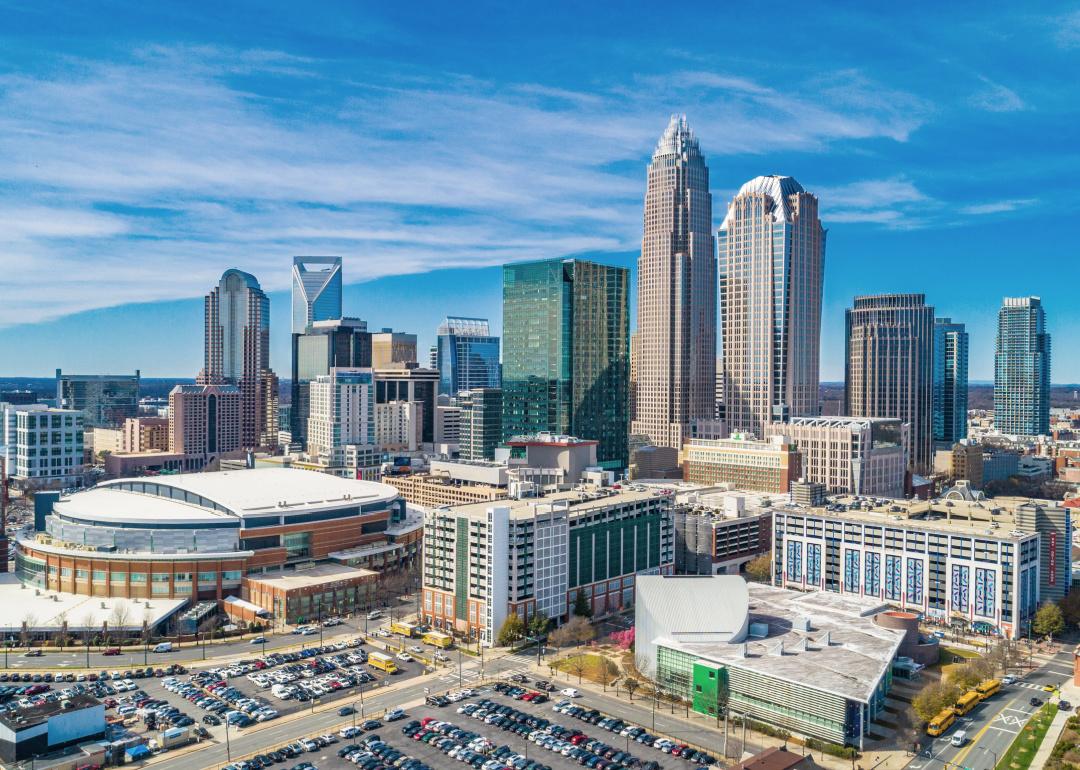
Kevin Ruck // Shutterstock
#20. Charlotte, North Carolina
– Estimated mortgage payment: $2,100
– Top affordable destination: Hickory, North Carolina ($1,300 estimated mortgage payment)
– Monthly savings: $800
Charlotte is the most populous city in North Carolina and is quickly becoming unaffordable for many of its residents. To the northwest, in the foothills of the Blue Ridge Mountains, Hickory offers a walkable historic downtown and a similar Southern setting to Charlotte.
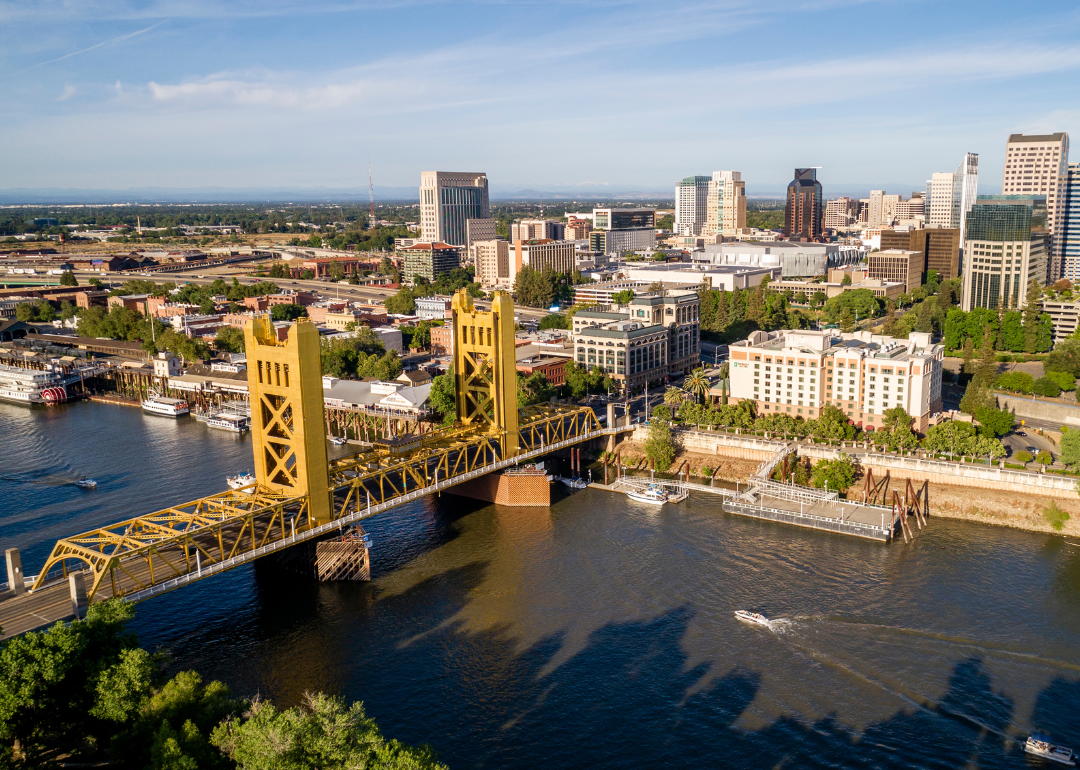
Canva
#19. Sacramento, California
– Estimated mortgage payment: $3,000
– Top affordable destination: Yuba City, California ($2,400 estimated mortgage payment)
– Monthly savings: $600
Many Sacramento homebuyers have their eyes set on suburban Yuba City as they look to trade high costs of living for a city where most residents can afford to own their homes. Sacramento politicians are facing pushback as they attempt to add homeless shelters.
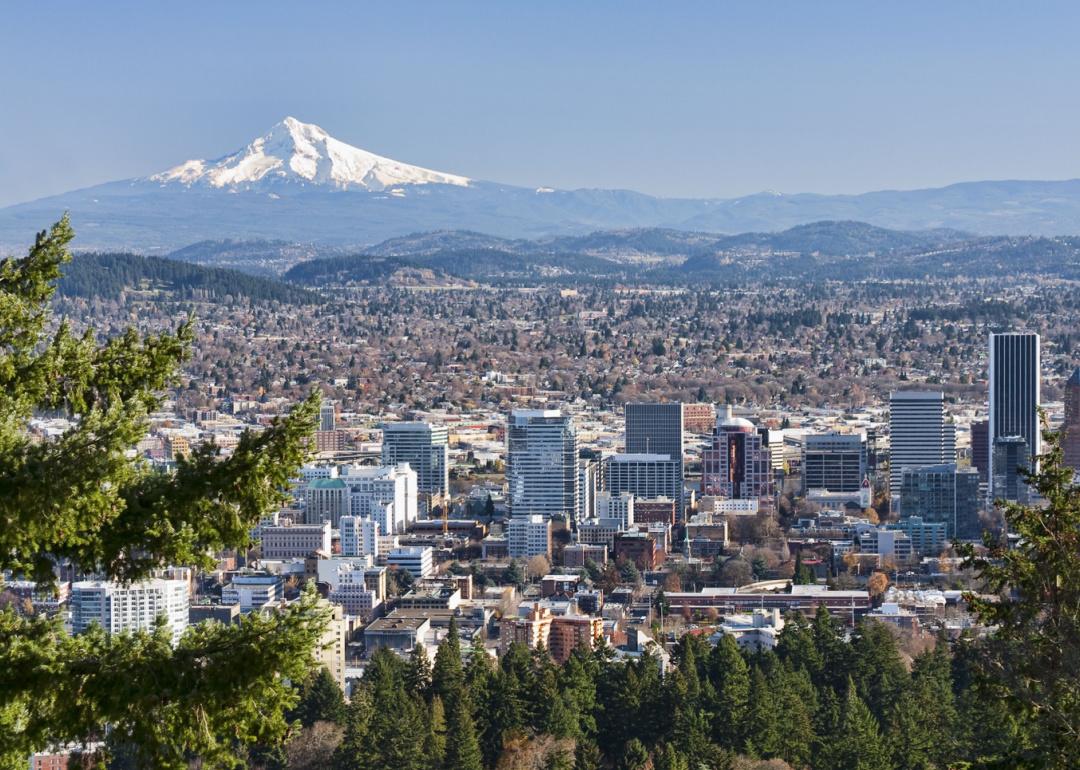
Josemaria Toscano // Shutterstock
#18. Portland, Oregon
– Estimated mortgage payment: $2,700
– Top affordable destination: Salem, Oregon ($2,300 estimated mortgage payment)
– Monthly savings: $400
Oregon is becoming pricier than ever. A new report from United Ways of the Pacific Northwest and United for ALICE found that almost half of the households in the state don’t make enough money to cover basic bills. For Portland residents looking to buy a home, Salem may intrigue them due to its relatively average cost of living compared with the rest of the U.S., according to U.S. News & World Report.
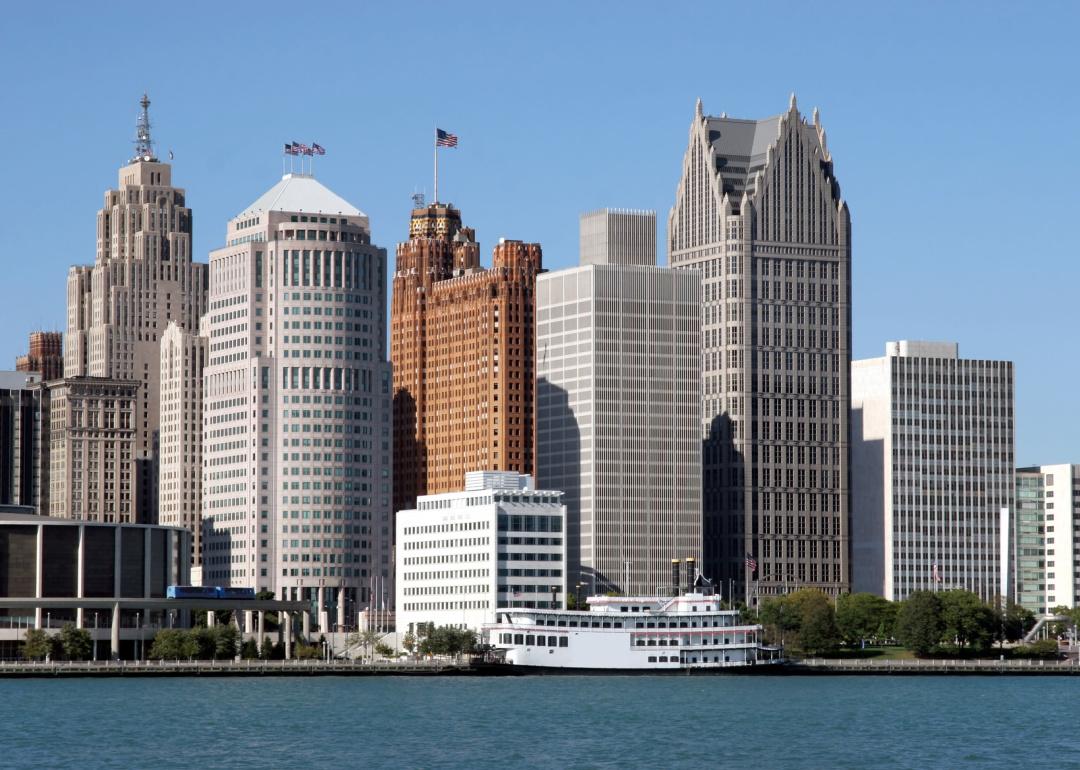
Vladimir Mucibabic // Shutterstock
#17. Detroit
– Estimated mortgage payment: $1,500
– Top affordable destination: Flint, Michigan ($1,000 estimated mortgage payment)
– Monthly savings: $500
Detroit, home of the U.S. automobile industry, has not historically had a high cost of living compared with other parts of the country. However, record inflation has not spared any part of the U.S., nor any individual income demographic, and it is giving households reason to eye homes for purchase in Flint.
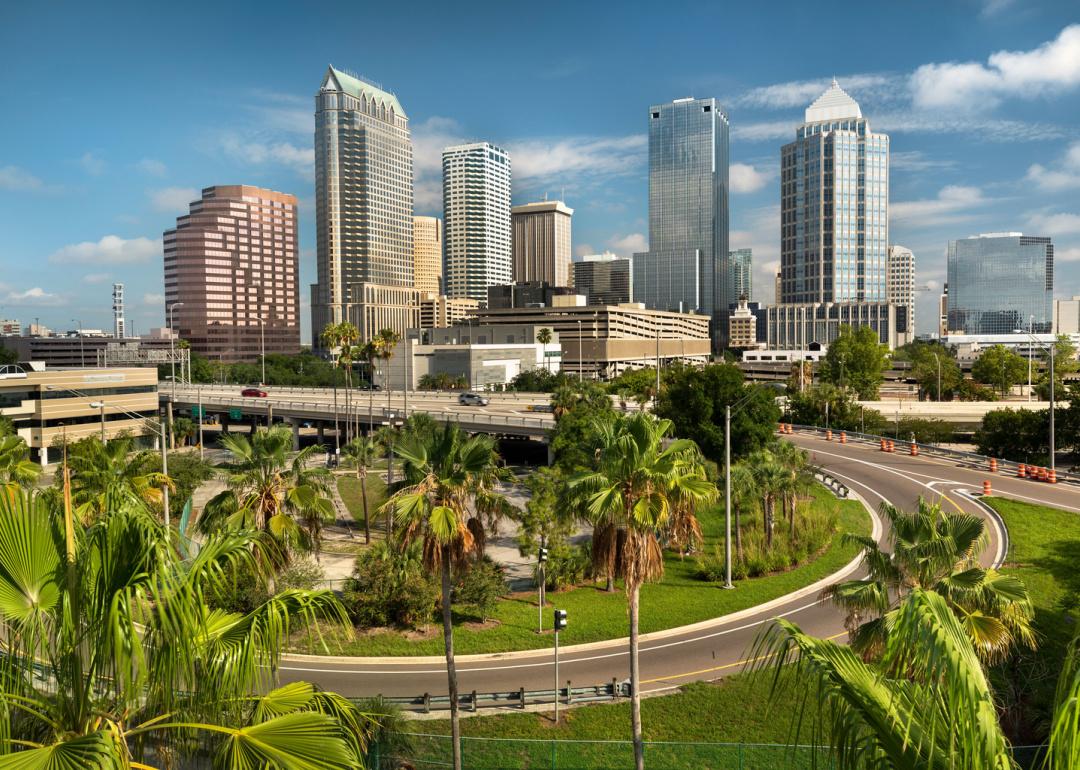
AevanStock // Shutterstock
#16. Tampa, Florida
– Estimated mortgage payment: $2,000
– Top affordable destination: Lakeland, Florida ($1,700 estimated mortgage payment)
– Monthly savings: $300
The Tampa metro has been a frequent target of hurricanes that make their way across the Gulf of Mexico, including Hurricane Ian, which ripped apart Fort Myers Beach to the south. Lakeland is roughly 30 miles inland and east of Tampa and may offer homeowners more protection from bad weather.
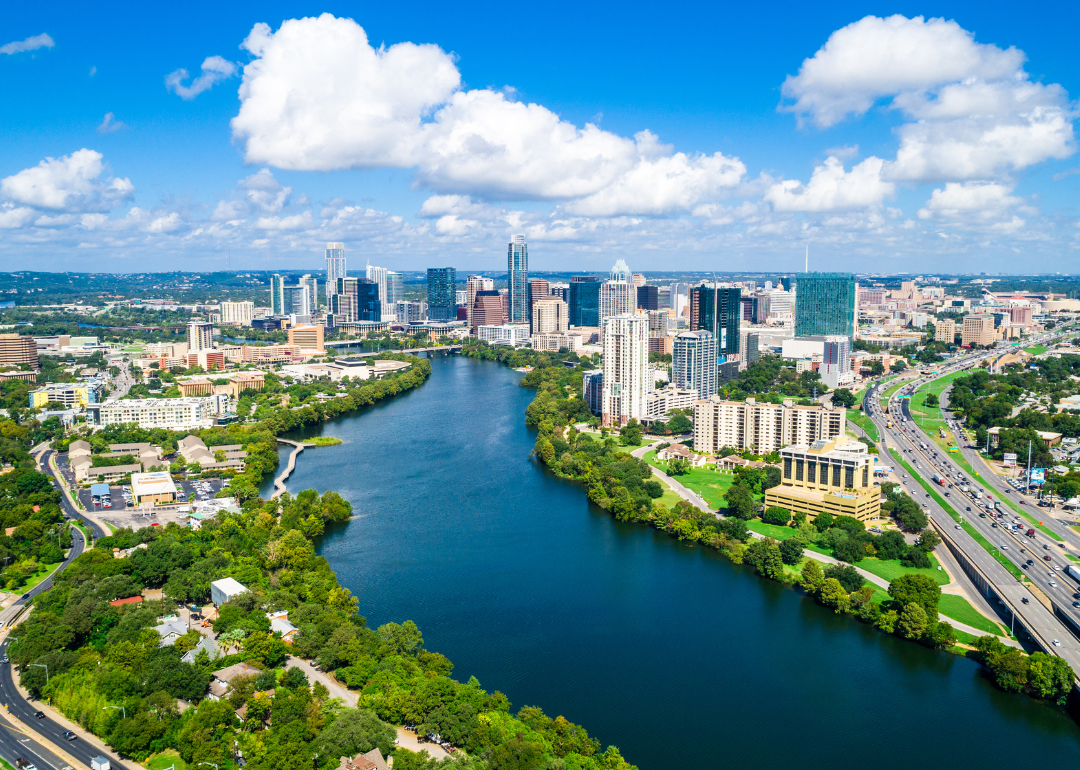
Canva
#15. Austin, Texas
– Estimated mortgage payment: $2,600
– Top affordable destination: San Antonio, Texas ($1,700 estimated mortgage payment)
– Monthly savings: $900
Austin, the San Francisco of the South, is going through growing pains as housing stock falls short of demand and prices have skyrocketed to unaffordable levels. San Antonio offers an appealing alternative for homebuyers who love the hill country and its lakes and rivers, and the city is only 1.5 hours away from the state capital.
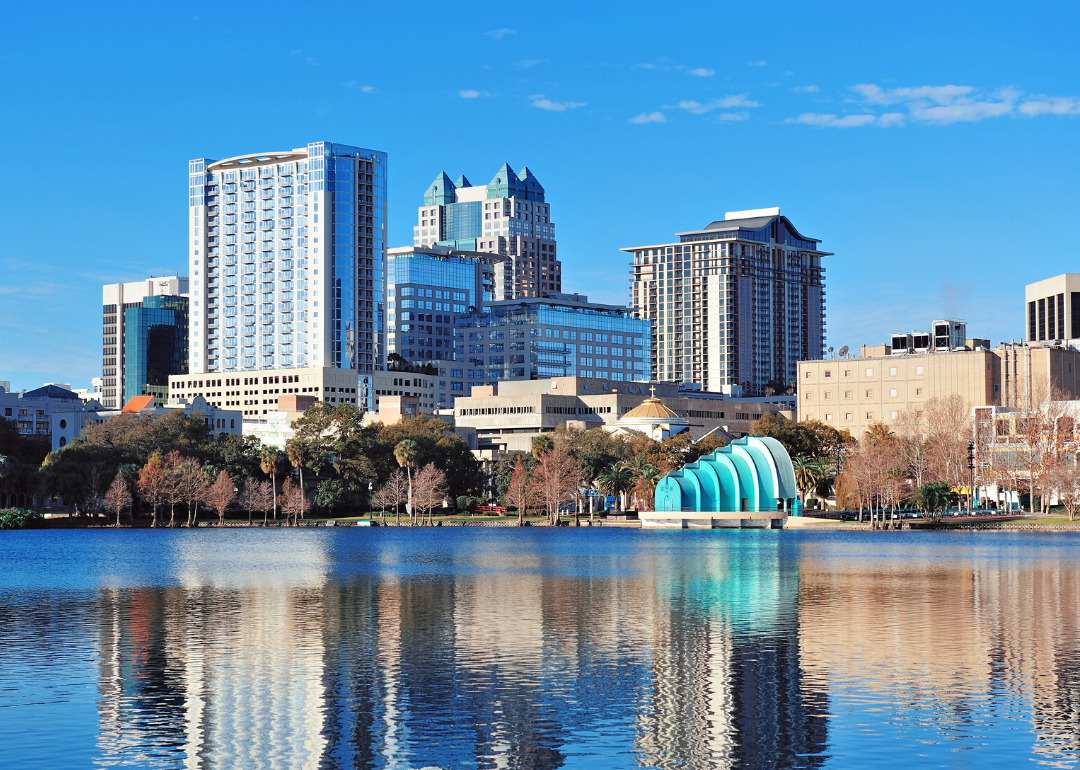
Canva
#14. Orlando, Florida
– Estimated mortgage payment: $2,100
– Top affordable destination: Lakeland, Florida ($1,700 estimated mortgage payment)
– Monthly savings: $400
Lakeland is a hot spot for Florida homebuyers looking for affordable alternatives to the big metros, pulling buyers from both Orlando and Tampa. Lakeland is near a number of attractions like Disney World and the beaches along the Gulf Coast.
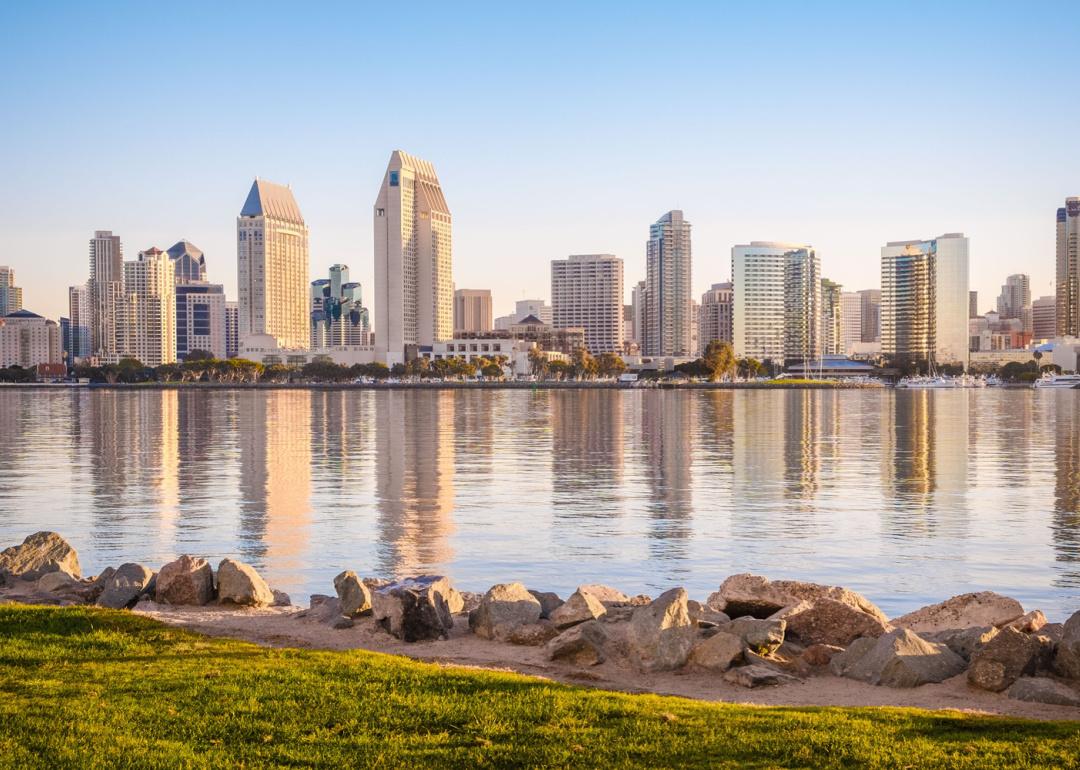
Dancestrokes // Shutterstock
#13. San Diego
– Estimated mortgage payment: $3,800
– Top affordable destination: Riverside, California ($2,900 estimated mortgage payment)
– Monthly savings: $900
The so-called Inland Empire, centered on San Bernardino and Riverside, has been luring millennials looking for affordable housing for at least the past decade—a trend that only intensified with the pandemic’s effects on the cost of living in Los Angeles County.
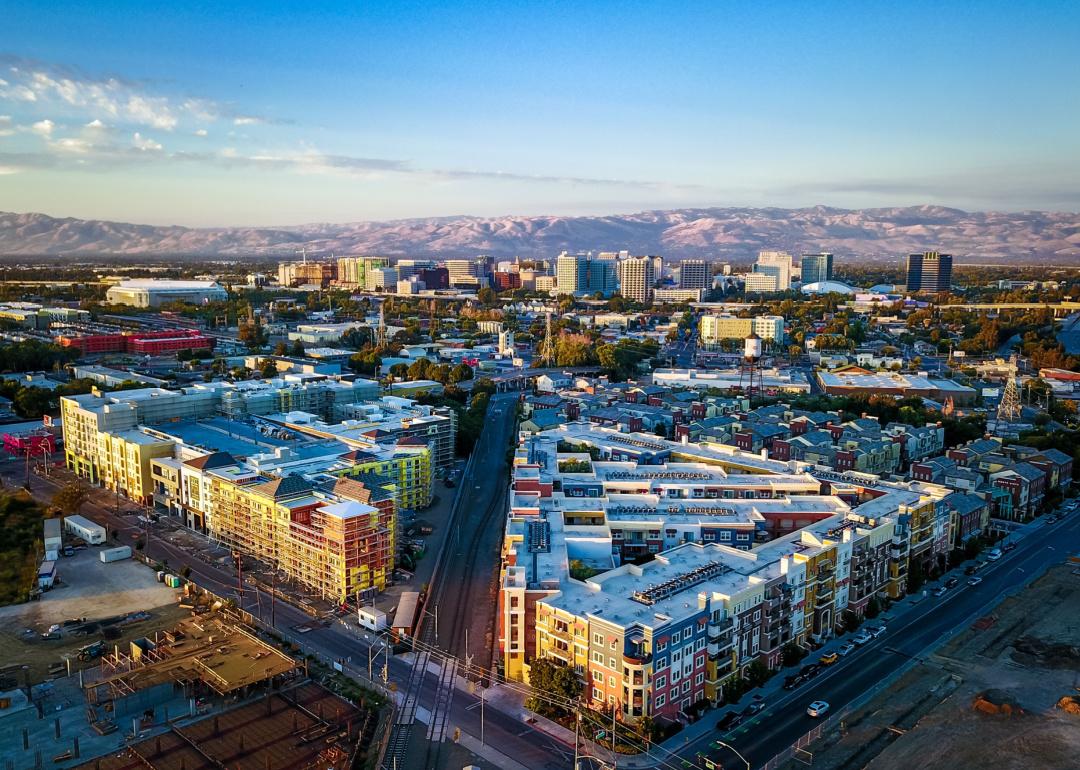
Uladzik Kryhin // Shutterstock
#12. San Jose, California
– Estimated mortgage payment: $4,700
– Top affordable destination: San Francisco, California ($4,200 estimated mortgage payment)
– Monthly savings: $500
California home prices may feel like a totally different ball game for much of the country, but high-earning San Jose homeowners are cashing in and moving into San Francisco, which is nearly equally as expensive. San Francisco has experienced slower housing growth than comparable cities—including Austin, Texas, and Seattle—over the past decade due to permitting fewer new builds, according to a San Francisco Chronicle analysis published in 2022.
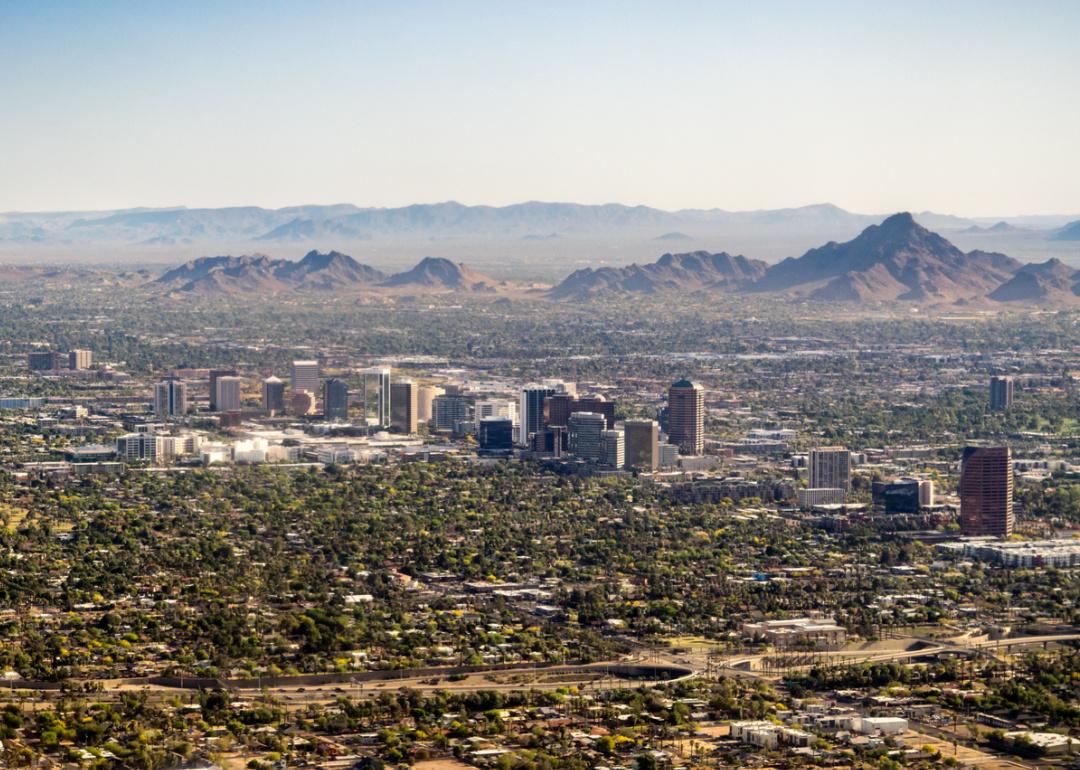
Nate Hovee // Shutterstock
#11. Phoenix
– Estimated mortgage payment: $2,400
– Top affordable destination: Prescott Valley, Arizona ($2,200 estimated mortgage payment)
– Monthly savings: $200
Phoenicians are trading their valley for more mountainous landscapes about 1.5 hours north. Prescott Valley has a proud Western ethos that sees more winter weather than Phoenix. Phoenix housing costs saw one of the largest jumps nationally in recent years, fueled partly by deep-pocketed investors who bought starter properties to make into rental units over the pandemic.
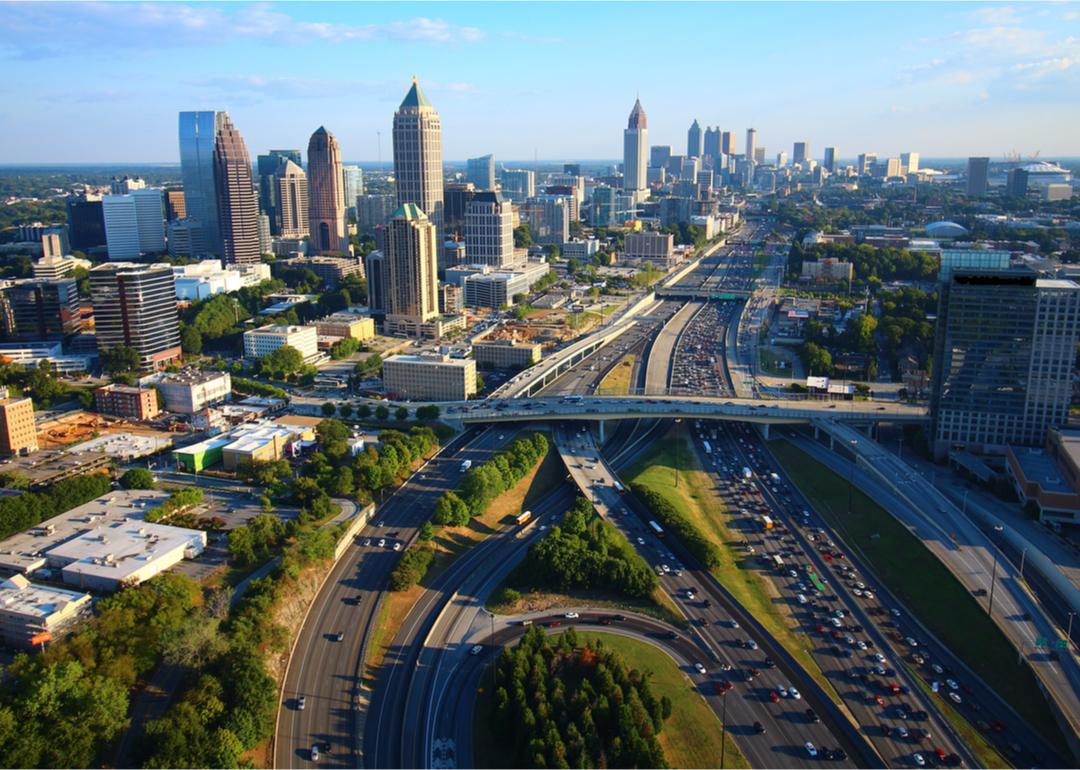
Brett Barnhill // Shutterstock
#10. Atlanta
– Estimated mortgage payment: $2,100
– Top affordable destination: Gainesville, Georgia ($2,000 estimated mortgage payment)
– Monthly savings: $100
Gainesville is a hub for poultry farming and, according to the 2020 census, home to 42,000 people, making it just a fraction of the size of nearby Atlanta, which boasts a population of nearly half a million. A shortage of home inventory in Atlanta is suppressing the market there and continuing to put upward pressure on home values.
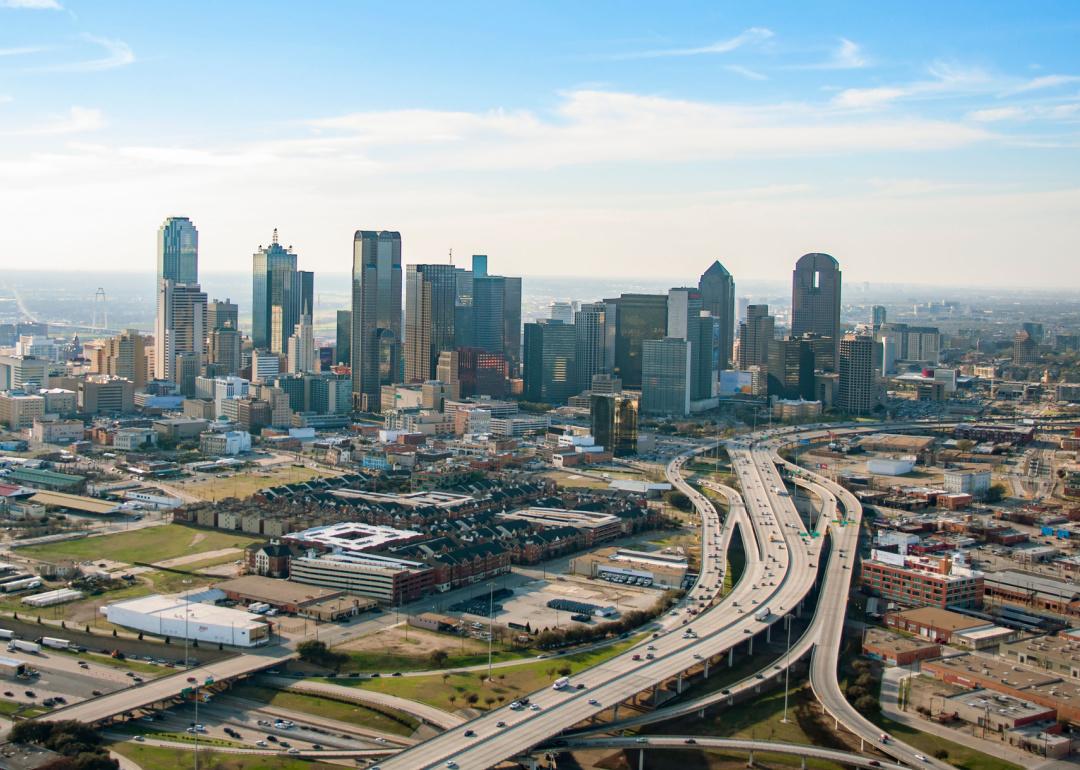
kintermedia // Shutterstock
#9. Dallas
– Estimated mortgage payment: $2,300
– Top affordable destination: Houston, Texas ($1,900 estimated mortgage payment)
– Monthly savings: $400
Houston, we have a problem—those hoity-toity Dallasites are being priced out of Dallas-Fort Worth and want lower costs of living. And they may be finding it in sprawling Houston, another of the most populous metro areas in the entire country. Houston offers a low cost of living to the DFW metro, and builders in the region are actively adding home inventory that could help bring prices down in the near future.
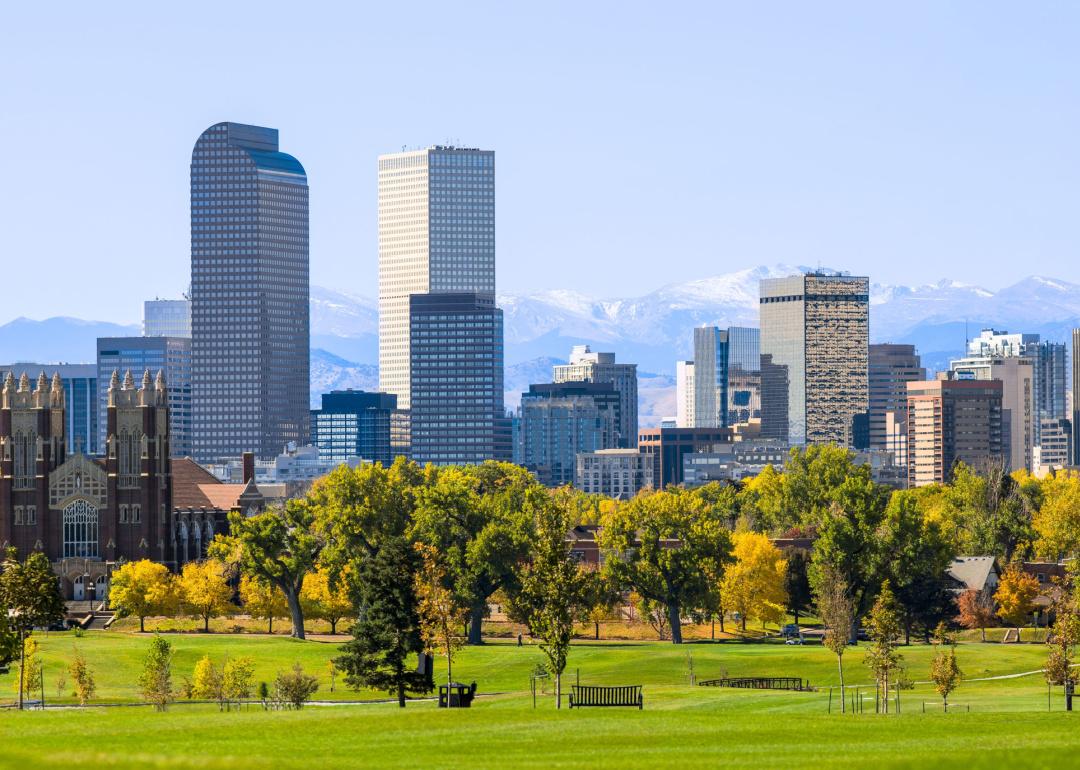
Studio 1One // Shutterstock
#8. Denver
– Estimated mortgage payment: $2,900
– Top affordable destination: Greeley, Colorado ($2,600 estimated mortgage payment)
– Monthly savings: $300
In Denver, homebuyers are looking to Greeley, home of the University of Northern Colorado, to reclaim a few hundred dollars of their housing costs each month. Home costs in the Denver metro have skyrocketed due to a shortage of inventory in recent years—much like the rest of the country.
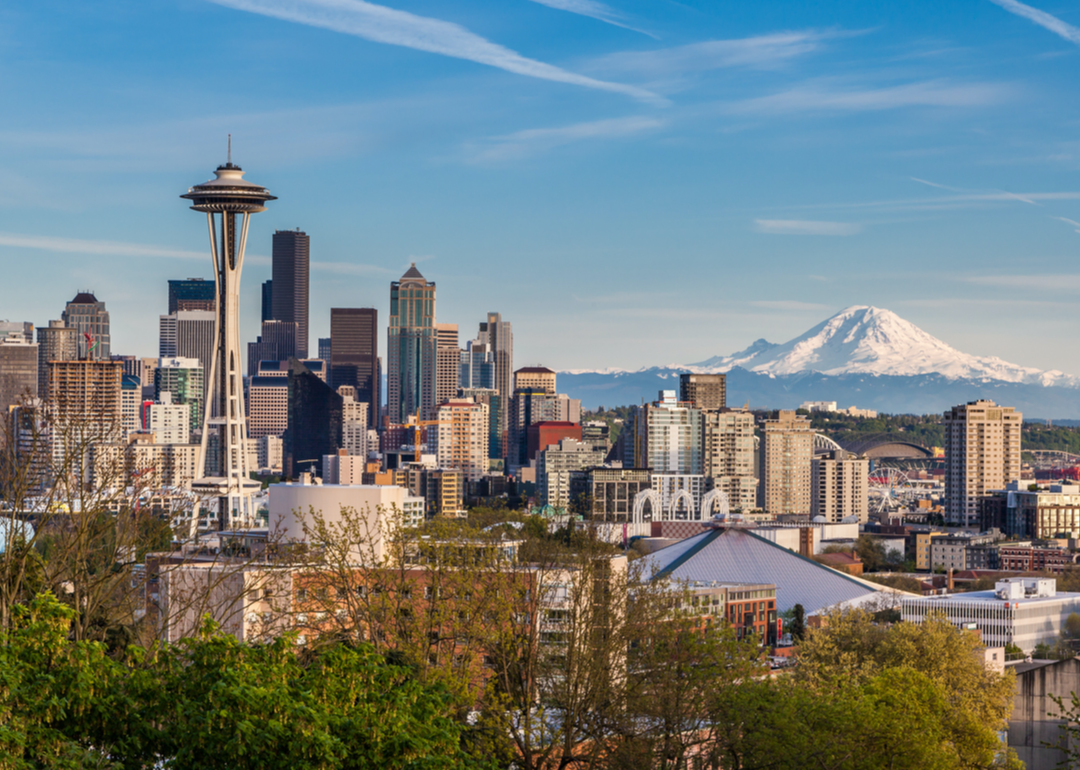
kan_khampanya // Shutterstock
#7. Seattle
– Estimated mortgage payment: $3,400
– Top affordable destination: Phoenix, Arizona ($2,400 estimated mortgage payment)
– Monthly savings: $1,000
Seattleites are fleeing Big Tech’s backyard in the Pacific Northwest for dry and sunny Phoenix. And even putting Seattle housing costs aside, it’s no wonder—a recent regional economic study found the cost of just about everything in Seattle is more expensive than the U.S. average.
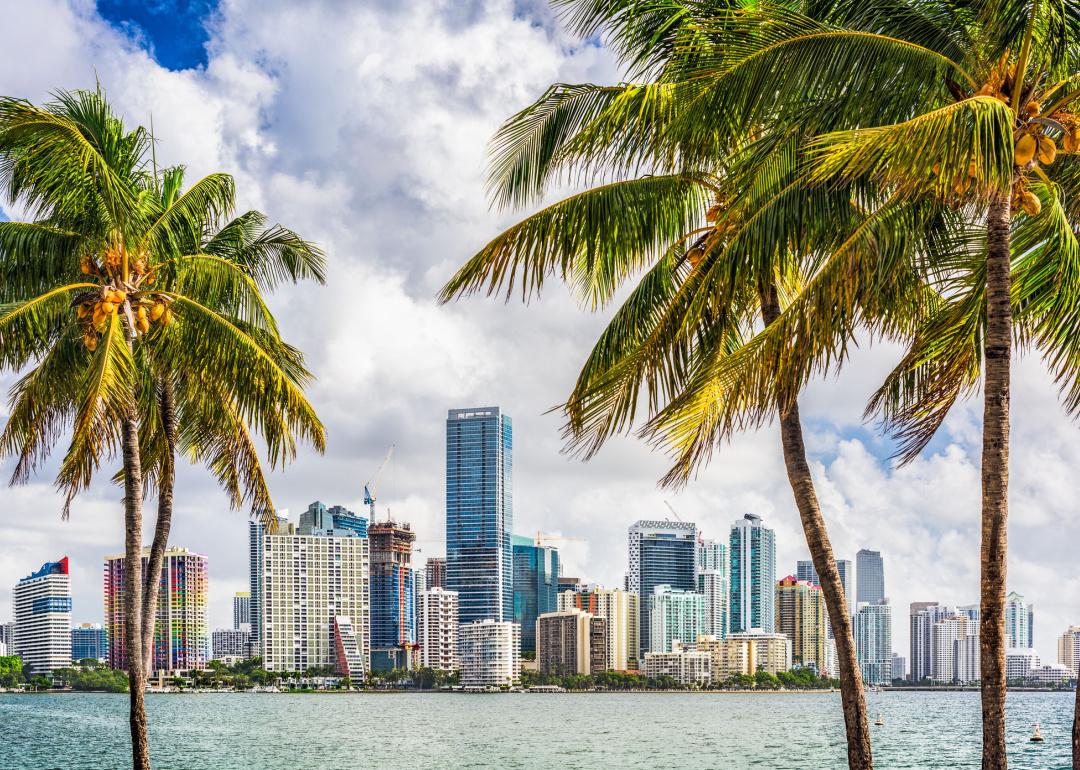
Sean Pavone // Shutterstock
#6. Miami
– Estimated mortgage payment: $2,200
– Top affordable destination: Port St. Lucie, Florida ($2,000 estimated mortgage payment)
– Monthly savings: $200
Port St. Lucie has experienced massive population growth in recent years, now ranking just behind major cities like Miami, Tampa, and Orlando. In the face of that growth, the city is currently trying to rediscover its identity and what sets it apart amid a throng of Florida population centers with world-renowned tourist-driven economies.
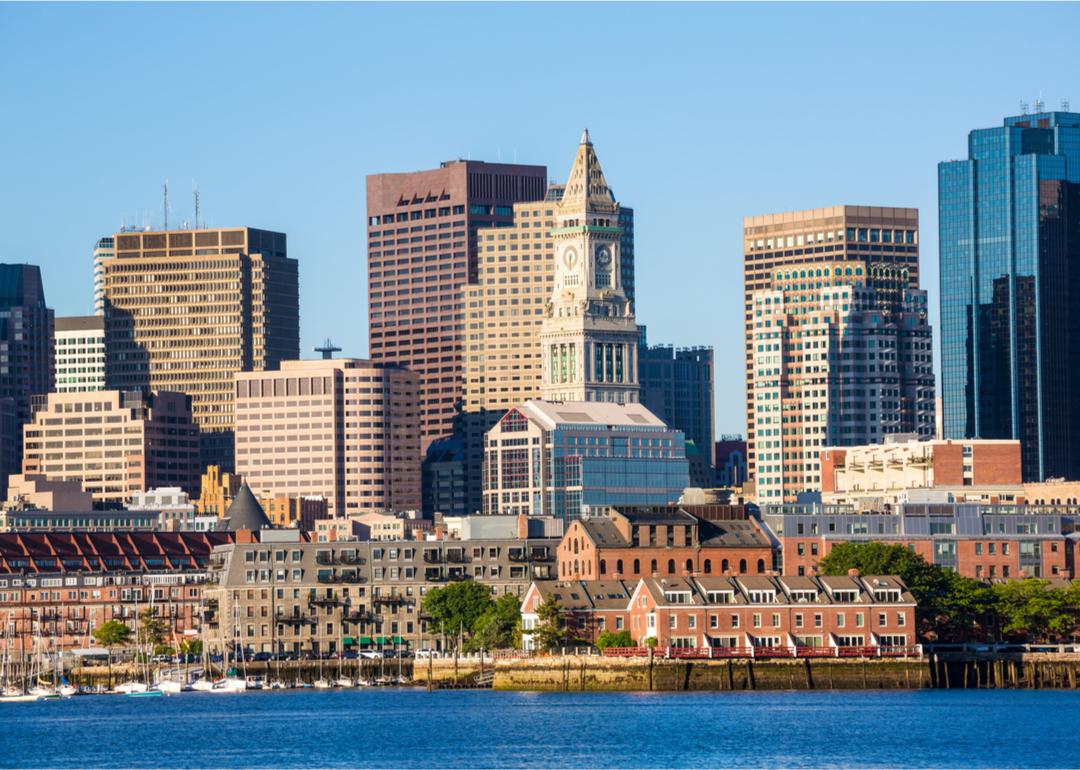
lunamarina // Shutterstock
#5. Boston
– Estimated mortgage payment: $3,000
– Top affordable destination: Worcester, Massachusetts ($2,100 estimated mortgage payment)
– Monthly savings: $900
Massachusetts homebuyers pay the fifth-highest down payments in the country on average, and the state is dealing with its own shortage of housing inventory—especially the kind that middle- and low-income residents can afford. Worcester, which has seen its population grow by roughly 21,000 over the last decade, is the second most populous city in the state and is located just west of Boston.

Pete Niesen // Shutterstock
#4. San Francisco
– Estimated mortgage payment: $4,200
– Top affordable destination: Sacramento, California ($3,000 estimated mortgage payment)
– Monthly savings: $1,200
Like many other business centers, San Francisco, the gateway to the Pacific, is currently undergoing a post-pandemic shift in culture as offices sit vacant. Retailers and other businesses have begun to exit the city, citing a rise in shoplifting. Homebuyers are finding a booming arts scene, a wide array of festivals, and lower housing costs in nearby Sacramento.
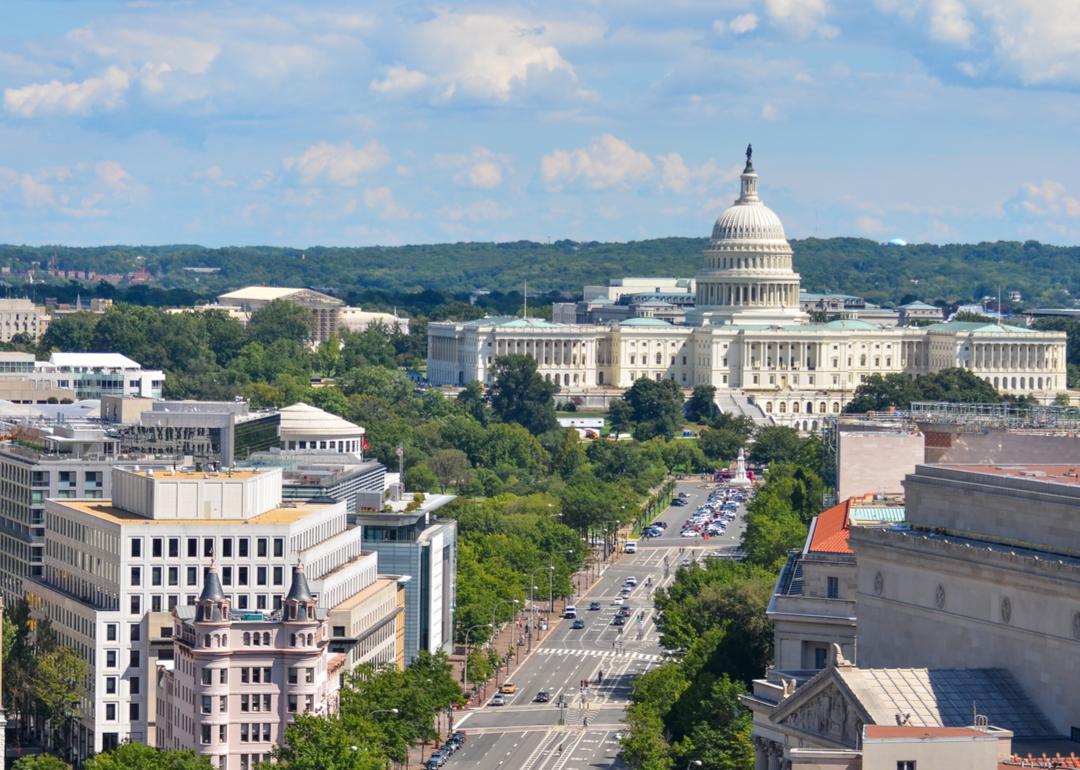
Orhan Cam // Shutterstock
#3. Washington DC
– Estimated mortgage payment: $2,700
– Top affordable destination: Baltimore, Maryland ($1,900 estimated mortgage payment)
– Monthly savings: $800
Baltimore’s median home prices dropped for the first time in years this spring, and the city has lost residents in recent years. The downtown has also been plagued by blight due to historic disinvestment in Black communities that have inhabited its characteristic rowhomes. But the market is offering Washington D.C. residents, who pay among the most in the country for housing, the opportunity to trade down their housing costs.

TierneyMJ // Shutterstock
#2. Los Angeles
– Estimated mortgage payment: $3,800
– Top affordable destination: Riverside, California ($2,900 estimated mortgage payment)
– Monthly savings: $900
Like those in San Diego, Los Angelenos continue to be swayed by the promise of an easier cost of living in the Inland Empire, which comprises Riverside and San Bernardino. Riverside, in particular, is where children can attend above-average schools compared with the rest of the state, and most residents there can afford to own their homes, according to Niche.
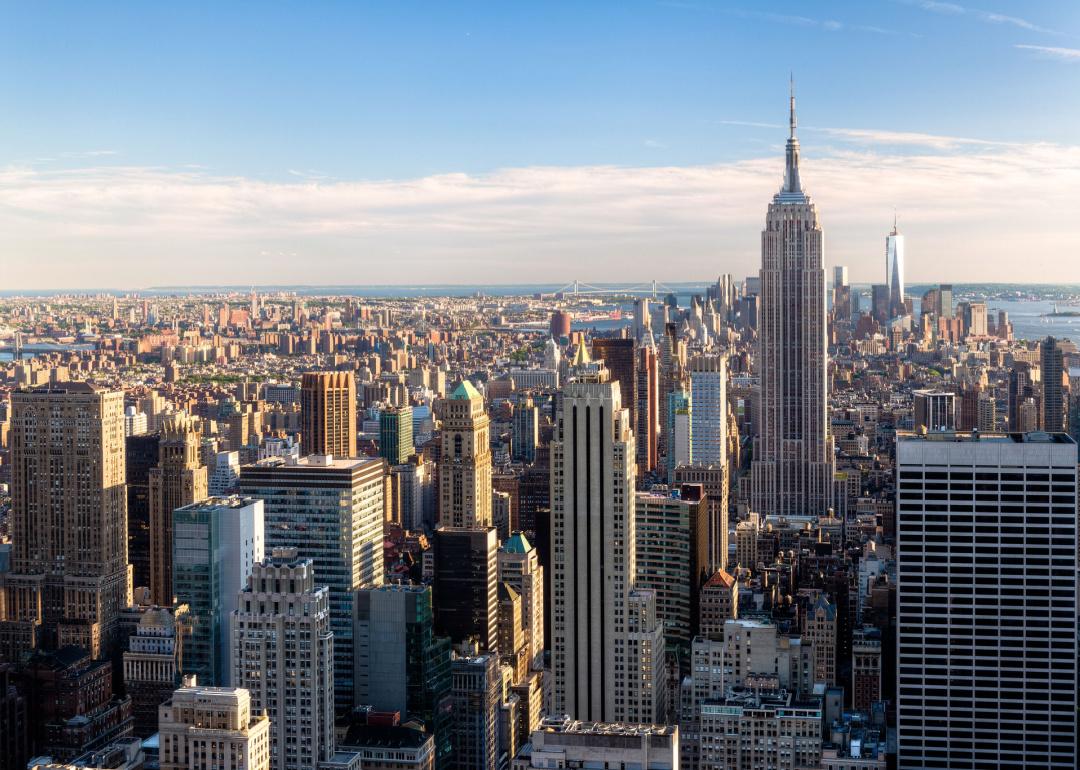
Thiago Leite // Shutterstock
#1. New York
– Estimated mortgage payment: $2,900
– Top affordable destination: Philadelphia, Pennsylvania ($1,900 estimated mortgage payment)
– Monthly savings: $1,000
One of the greatest towns for professional sports fans, Philadelphia is pulling the attention of New York homebuyers seeking to lower their monthly mortgage payments. Philly offers a reprieve for a buyer who could drop $1.5 million for property in the New York City borough of Staten Island, even if it still has relatively high housing prices.
Data reporting by Elena Cox. Story editing by Jeff Inglis. Copy editing by Andrew Mangan. Photo selection by Elizabeth Ciano.
This story originally appeared on American Home Shield and was produced and
distributed in partnership with Stacker Studio.
Founded in 2017, Stacker combines data analysis with rich editorial context, drawing on authoritative sources and subject matter experts to drive storytelling.
You may like
Business
5 tech advancements sports venues have added since your last event
Published
8 hours agoon
April 19, 2024
In today’s digital climate, consuming sports has never been easier. Thanks to a plethora of streaming sites, alternative broadcasts, and advancements to home entertainment systems, the average fan has myriad options to watch and learn about their favorite teams at the touch of a button—all without ever having to leave the couch.
As a result, more and more sports venues have committed to improving and modernizing their facilities and fan experiences to compete with at-home audiences. Consider using mobile ticketing and parking passes, self-service kiosks for entry and ordering food, enhanced video boards, and jumbotrons that supply data analytics and high-definition replays. These innovations and upgrades are meant to draw more revenue and attract various sponsored partners. They also deliver unique and convenient in-person experiences that rival and outmatch traditional ways of enjoying games.
In Los Angeles, the Rams and Chargers’ SoFi Stadium has become the gold standard for football venues. It’s an architectural wonder with closer views, enhanced hospitality, and a translucent roof that cools the stadium’s internal temperature.
The Texas Rangers’ ballpark, Globe Life Field, added field-level suites and lounges that resemble the look and feel of a sports bar. Meanwhile, the Los Angeles Clippers are building a new arena (in addition to retail space, team offices, and an outdoor public plaza) that will seat 18,000 people and feature a fan section called The Wall, which will regulate attire and rooting interest.
It’s no longer acceptable to operate with old-school facilities and technology. Just look at Commanders Field (formerly FedExField), home of the Washington Commanders, which has faced criticism for its faulty barriers, leaking ceilings, poor food options, and long lines. Understandably, the team has been attempting to find a new location to build a state-of-the-art stadium and keep up with the demand for high-end amenities.
As more organizations audit their stadiums and arenas and keep up with technological innovations, Uniqode compiled a list of the latest tech advancements to coax—and keep—fans inside venues.
![]()
Jeff Gritchen/MediaNews Group/Orange County Register // Getty Images
Just Walk Out technology
After successfully installing its first cashierless grocery store in 2020, Amazon has continued to put its tracking technology into practice.
In 2023, the Seahawks incorporated Just Walk Out technology at various merchandise stores throughout Lumen Field, allowing fans to purchase items with a swipe and scan of their palms.
The radio-frequency identification system, which involves overhead cameras and computer vision, is a substitute for cashiers and eliminates long lines.
RFID is now found in a handful of stadiums and arenas nationwide. These stores have already curbed checkout wait times, eliminated theft, and freed up workers to assist shoppers, according to Jon Jenkins, vice president of Just Walk Out tech.
Billie Weiss/Boston Red Sox // Getty Images
Self-serve kiosks
In the same vein as Amazon’s self-scanning technology, self-serve kiosks have become a more integrated part of professional stadiums and arenas over the last few years. Some of these function as top-tier vending machines with canned beers and nonalcoholic drinks, shuffling lines quicker with virtual bartenders capable of spinning cocktails and mixed drinks.
The kiosks extend past beverages, as many college and professional venues have started using them to scan printed and digital tickets for more efficient entrance. It’s an effort to cut down lines and limit the more tedious aspects of in-person attendance, and it’s led various competing kiosk brands to provide their specific conveniences.
Kyle Rivas // Getty Images
Mobile ordering
Is there anything worse than navigating the concourse for food and alcohol and subsequently missing a go-ahead home run, clutch double play, or diving catch?
Within the last few years, more stadiums have eliminated those worries thanks to contactless mobile ordering. Fans can select food and drink items online on their phones to be delivered right to their seats. Nearly half of consumers said mobile app ordering would influence them to make more restaurant purchases, according to a 2020 study at PYMNTS. Another study showed a 22% increase in order size.
Many venues, including Yankee Stadium, have taken notice and now offer personalized deliveries in certain sections and established mobile order pick-up zones throughout the ballpark.
Darrian Traynor // Getty Images
QR codes at seats
Need to remember a player’s name? Want to look up an opponent’s statistics at halftime? The team at Digital Seat Media has you covered.
Thus far, the company has added seat tags to more than 50 venues—including two NFL stadiums—with QR codes to promote more engagement with the product on the field. After scanning the code, fans can access augmented reality features, look up rosters and scores, participate in sponsorship integrations, and answer fan polls on the mobile platform.
Boris Streubel/Getty Images for DFL // Getty Images
Real-time data analytics and generative AI
As more venues look to reinvigorate the in-stadium experience, some have started using generative artificial intelligence and real-time data analytics. Though not used widely yet, generative AI tools can create new content—text, imagery, or music—in conjunction with the game, providing updates, instant replays, and location-based dining suggestions
Last year, the Masters golf tournament even began including AI score projections in its mobile app. Real-time data is streamlining various stadium pitfalls, allowing operation managers to monitor staffing issues at busy food spots, adjust parking flows, and alert custodians to dirty or damaged bathrooms. The data also helps with security measures. Open up an app at a venue like the Honda Center in Anaheim, California, and report safety issues or belligerent fans to help better target disruptions and preserve an enjoyable experience.
Story editing by Nicole Caldwell. Copy editing by Paris Close. Photo selection by Lacy Kerrick.
This story originally appeared on Uniqode and was produced and
distributed in partnership with Stacker Studio.
Founded in 2017, Stacker combines data analysis with rich editorial context, drawing on authoritative sources and subject matter experts to drive storytelling.
Business
Import costs in these industries are keeping prices high
Published
1 week agoon
April 11, 2024
Inflation has cooled substantially, but Americans are still feeling the strain of sky-high prices. Consumers have to spend more on the same products, from the grocery store to the gas pump, than ever before.
Increased import costs are part of the problem. The U.S. is the largest goods importer in the world, bringing in $3.2 trillion in 2022. Import costs rose dramatically in 2021 and 2022 due to shipping constraints, world events, and other supply chain interruptions and cost pressures. At the June 2022 peak, import costs for all commodities were up 18.6% compared to January 2020.
While import costs have since fallen most months—helping to lower inflation—they remain nearly 12% above what they were in 2020. And beginning in 2024, import costs began to rise again, with January seeing the highest one-month increase since March 2022.
Machinery Partner used Bureau of Labor Statistics data to identify the soaring import costs that have translated to higher costs for Americans. Imports in a few industries have had an outsized impact, helping drive some of the overall spikes. Crop production, primary metal manufacturing, petroleum and coal product manufacturing, and oil and gas extraction were the worst offenders, with costs for each industry remaining at least 20% above 2020.
![]()

Machinery Partner
Imports related to crops, oil, and metals are keeping costs up
At the mid-2022 peak, import costs related to oil, gas, petroleum, and coal products had the highest increases, doubling their pre-pandemic costs. Oil prices went up globally as leaders anticipated supply disruptions from the conflict in Ukraine. The U.S. and other allied countries put limits on Russian revenues from oil sales through a price cap of oil, gas, and coal from the country, which was enacted in 2022.
This activity around the world’s second-largest oil producer pushed prices up throughout the market and intensified fluctuations in crude oil prices. Previously, the U.S. had imported hundreds of thousands of oil barrels from Russia per day, making the country a leading source of U.S. oil. In turn, the ban affected costs in the U.S. beyond what occurred in the global economy.
Americans felt this at the pump—with gasoline prices surging 60% for consumers year-over-year in June 2022 and remaining elevated to this day—but also throughout the economy, as the entire supply chain has dealt with higher gas, oil, and coal prices.
Some of the pressure from petroleum and oil has shifted to new industries: crop production and primary metal manufacturing. In each of these sectors, import costs in January were up about 40% from 2020.
Primary metal manufacturing experienced record import price growth in 2021, which continued into early 2022. The subsequent monthly and yearly drops have not been substantial enough to bring costs down to pre-COVID levels. Bureau of Labor Statistics reporting shows that increasing alumina and aluminum production prices had the most significant influence on primary metal import prices. Aluminum is widely used in consumer products, from cars and parts to canned beverages, which in turn inflated rapidly.
Aluminum was in short supply in early 2022 after high energy costs—i.e., gas—led to production cuts in Europe, driving aluminum prices to a 13-year high. The U.S. also imposes tariffs on aluminum imports, which were implemented in 2018 to cut down on overcapacity and promote U.S. aluminum production. Suppliers, including Canada, Mexico, and European Union countries, have exemptions, but the tax still adds cost to imports.
U.S. agricultural imports have expanded in recent decades, with most products coming from Canada, Mexico, the EU, and South America. Common agricultural imports include fruits and vegetables—especially those that are tropical or out-of-season—as well as nuts, coffee, spices, and beverages. Turmoil with Russia was again a large contributor to cost increases in agricultural trade, alongside extreme weather events and disruptions in the supply chain. Americans felt these price hikes directly at the grocery store.
The U.S. imports significantly more than it exports, and added costs to those imports are felt far beyond its ports. If import prices continue to rise, overall inflation would likely follow, pushing already high prices even further for American consumers.
Story editing by Shannon Luders-Manuel. Copy editing by Kristen Wegrzyn.
This story originally appeared on Machinery Partner and was produced and
distributed in partnership with Stacker Studio.
Founded in 2017, Stacker combines data analysis with rich editorial context, drawing on authoritative sources and subject matter experts to drive storytelling.
Business
The states where people pay the most in car insurance premiums
Published
2 weeks agoon
April 4, 2024
Nearly every state requires drivers to carry car insurance, but the laws vary, and many factors affect the cost of coverage.
Some are controllable, at least to degrees: the type of car you have and your credit history. Some are not: your age and gender. Your marital status, place of residence, and claims history are among the other variables that go into it.
Across the United States, premiums are soaring, rising 20% year over year and increasing six times faster than consumer prices overall as of December 2023, CBS reported. Last September, CNN noted that car insurance rates jumped more in the previous year than they had since 1976.
CBS pointed to many potential reasons for these increases in prices. Coronavirus pandemic-era issues have made buying, fixing, and replacing vehicles costlier. Extreme weather events caused by climate change also damage more vehicles, while insurance companies are increasing their business costs. Severe and more frequent crashes are to blame as well, CNN reported.
On top of these, local factors such as population density, the number of uninsured drivers, and the frequency of insurance claims all affect premiums, which can lead motorists to change or switch their coverage, use other modes of transportation, or even alter decisions about when to buy a vehicle or what to look for.
To see how geography affects cost, Cheap Insurance mapped the states where people pay the most in car insurance premiums using MarketWatch data. Premium estimates were based on full-coverage car insurance for a 35-year-old driver with good credit and a clean driving record. Data accurate as of February 2024.
![]()
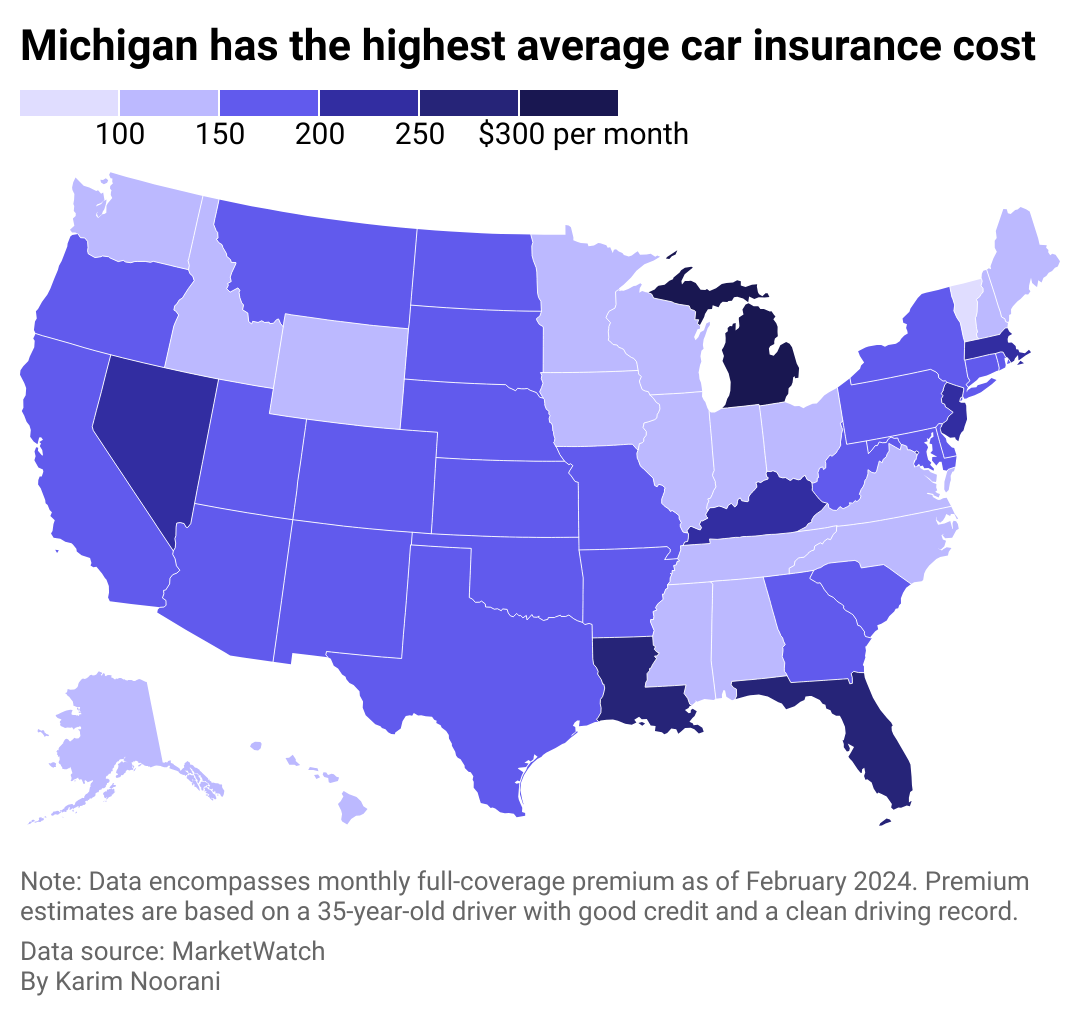
Cheap Insurance
Americans pay $167 per month on average for full-coverage insurance
There are common denominators among the five states where it’s most expensive to have car insurance: Michigan, Florida, Louisiana, Nevada, and Kentucky. Washington D.C. is another pricey locale, ranking #4 overall.
Three of these six are no-fault jurisdictions and require additional coverage beyond coverage to pay for medical costs. Michigan notably calls for $250,000 in personal injury protection (though people with Medicaid and Medicare may qualify for lower limits), $1 million in personal property insurance for damage done by your car in Michigan, and residual bodily injury and property damage liability that starts at $250,000 for a person harmed in an accident.
Other commonalities between these states include high urban population densities. At least 9 in 10 people in Nevada, Florida, and Washington D.C. live in cities and urban areas, which leads to more crashes and thefts and high rates of uninsured drivers and lawsuits. Additionally, Louisiana, Florida, and Kentucky rank #5, #8, and #10, respectively, in motor vehicle crash deaths per 100 million vehicle miles traveled in 2021 based on Department of Transportation data analyzed by the Insurance Institute for Highway Safety.
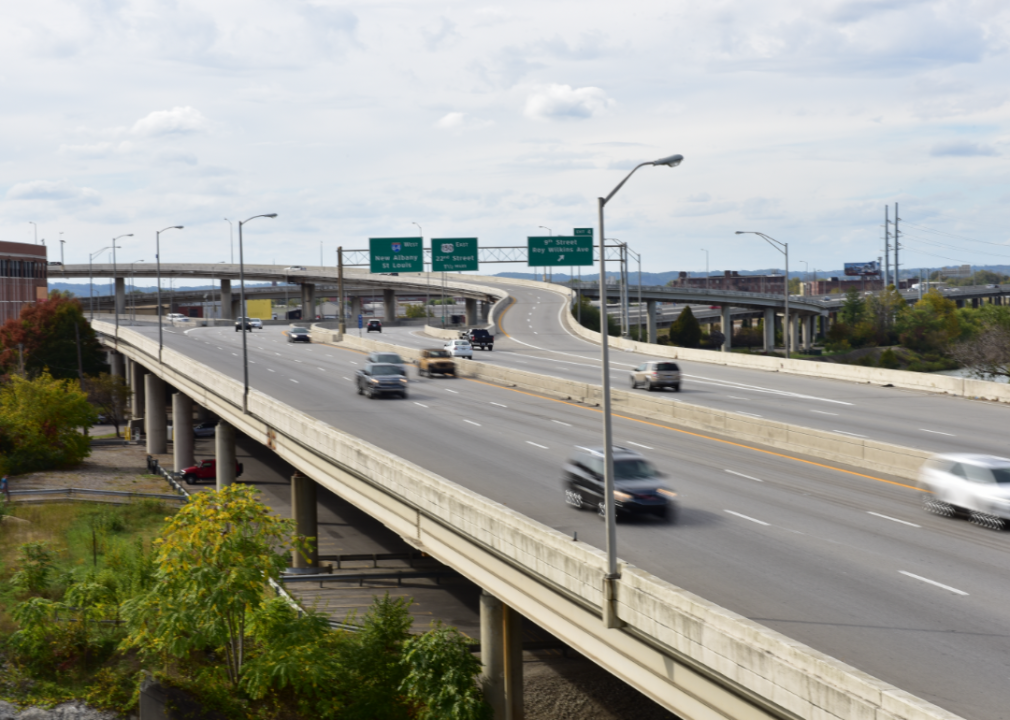
Canva
#5. Kentucky
– Monthly full-coverage insurance: $210
– Monthly liability insurance: $57

Canva
#4. Nevada
– Monthly full-coverage insurance: $232
– Monthly liability insurance: $107
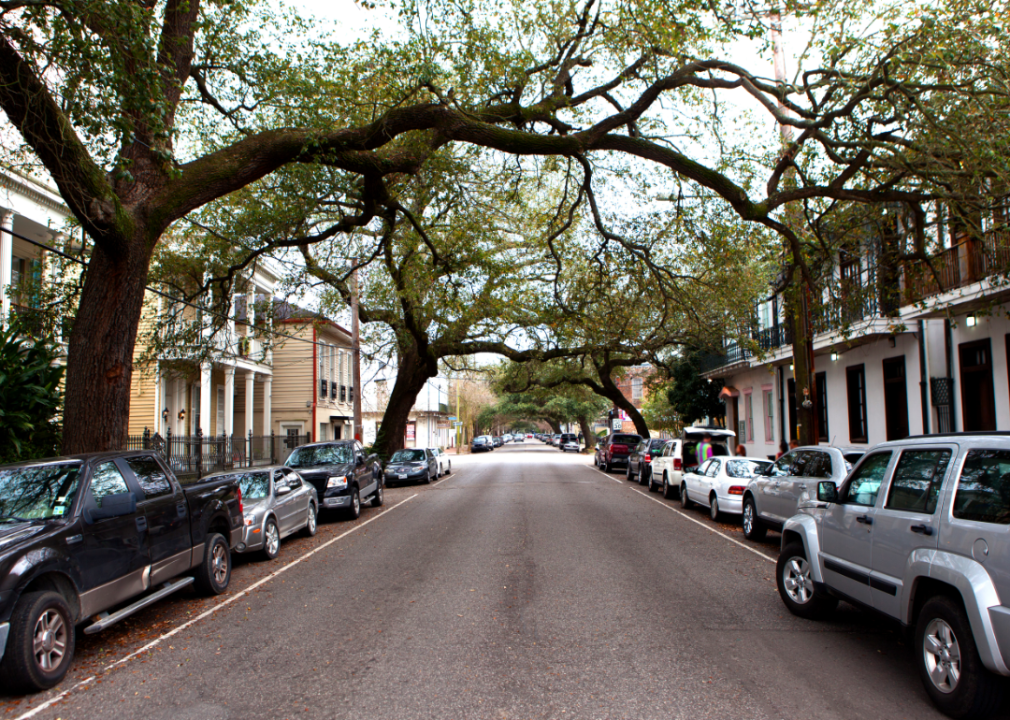
Canva
#3. Louisiana
– Monthly full-coverage insurance: $253
– Monthly liability insurance: $77
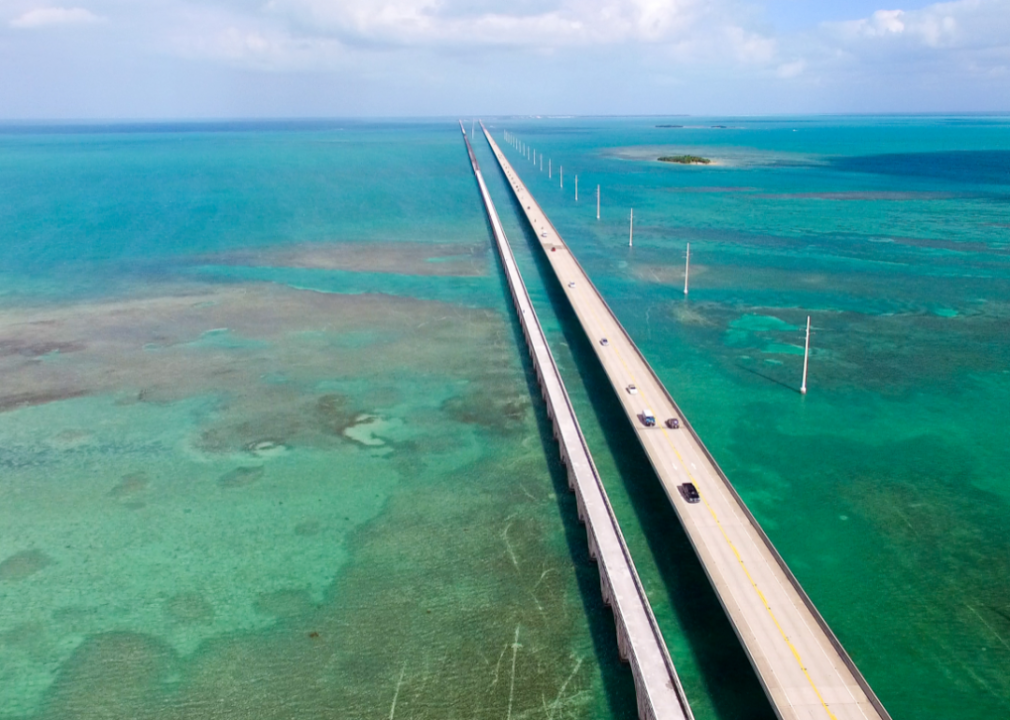
Canva
#2. Florida
– Monthly full-coverage insurance: $270
– Monthly liability insurance: $115

Canva
#1. Michigan
– Monthly full-coverage insurance: $304
– Monthly liability insurance: $113
Story editing by Carren Jao. Copy editing by Paris Close. Photo selection by Lacy Kerrick.
This story originally appeared on Cheap Insurance and was produced and
distributed in partnership with Stacker Studio.
Founded in 2017, Stacker combines data analysis with rich editorial context, drawing on authoritative sources and subject matter experts to drive storytelling.
Featured
-

 Business4 months ago
Business4 months agomesh conference goes deep on AI, with experts focusing in on training, ethics, and risk
-

 Business4 months ago
Business4 months agoSkill-based hiring is the answer to labour shortages, BCG report finds
-

 Events6 months ago
Events6 months agoTop 5 tech and digital transformation events to wrap up 2023
-

 People4 months ago
People4 months agoHow connected technologies trim rework and boost worker safety in hands-on industries
-

 Events3 months ago
Events3 months agoThe Northern Lights Technology & Innovation Forum comes to Calgary next month






